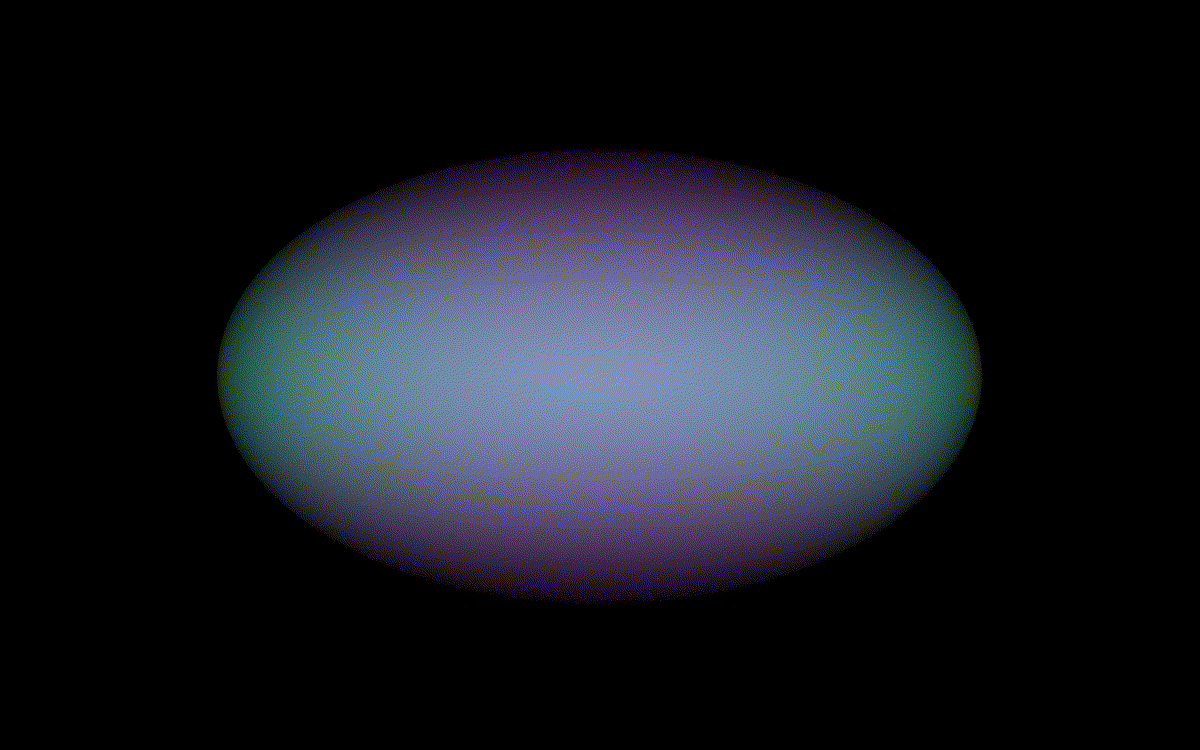slidenumbers: true
Nick Thompson
First: Compute the intersection of a ray and a sphere.
Ray is
A quadratic for
[.footer: Final scene from Peter Shirley's Raytracing in a Weekend series. You can do a lot with a good random number generator, Snell's law, and the ability to solve quadratics.]
A ray
Again, just a quadratic.
[.footer: An ellipsoid pseudocolored by Gaussian curvature]
Plug in
- No real roots implies no intersection of ray with torus
- Multiple real roots implies multiple intersections; take the smallest positive real root.
Gaussian curvature of torus computed from numerically evaluated first and second fundamental forms. Rendered via solution of quartic equation.
Gaussian curvature of torus computed using the curvature filter in Paraview. Artifacts from the triangle mesh are clearly visible and the curvature is incorrect everywhere.
Naive raytracing is agnostic to the differentiability of the objects in your scene.
All that matters to raytracing is that you can compute the intersection of your objects with a line.
Raytracing triangle meshes has become dominant in game programming. The assumption is that creation of the mesh is not that expensive-a good assumption for game asset generation; a bad one for visualizing ODE/PDE solutions.
CAD programs render diagrams using smoother surfaces; e.g., Bezier and Catmull-Clark.
- Memory requirements are drastically reduced relative to triangle meshes.
- No error prone conversion into triangle meshes.
- Pseudocoloring by derived quantities results in fewer visual artifacts.
- No need to subsample high-accuracy numerical solutions
^ High accuracy numerical methods might produce sparse pointsets in space. Without smooth interpolation, we have to subsample to extreme density to avoid artifacts.
Well, relatively easy, since 1D rootfinding problems are easy. But many interesting objects, such as Beziers and B-splines are parametric surfaces. Rendering them is a multivariate rootfinding problem-much harder.
Let's focus on those.
Parametric equation of helicoid
Intersects ray when
^ We must recover
Any method we use to compute the parameters
Let's surround the helicoid with a cylinder
Intersection points on the cylinder will give us bounds on
Working to constrain a ray intersection with an object is just as important as the convergence of the method to the correct solution.
The ability to say "this ray does not intersect our object" in as few flops as possible is just as important for your performance as the numerical method to compute the intersection when it does.
What if we can't constrain our initial guess very tightly?
The Newton fractal teaches us that predicting which root Newton's method will converge to is difficult.
In ray tracing, we need the minimal root to determine the closest intersection point to the ray.
[.footer: Newton fractal for $$z^8 - 15z^4 - 16$$]
A helicoid pseudocolored by Gaussian curvature. The pseudocoloring changes discontinuously where the non-minial roots are identified.
Bounced rays make the problem even worse than the generic multivariate rootfinding problem.
A ray that bounces off an object satisfies the equation
So you need to find the
And numerical imprecision might mean your
This generates a visual artifact known as shadow acne.
[.footer: Image courtesy of Digital Rune.]
- Newton's method with backtracking.
- The multivariate Halley iterate.
- A second order geometric method of Ko et. al.
Given
- Need to compute derivatives/Jacobians
- Slow with multiple roots
- Full-measure regions of initial conditions where it diverges.
- Can converge to values which are not roots.
- For ray intersections, it ignores your initial guess for
$$t$$ .
^ Since Newton's method computes the intersection of line with tangent plane,
But let's examine a hack that makes it a bit better.
Given
Newton update:
Patch: Define
If
Define
Choose
Helicoid rendered with Newton's method patched with backtracking. Initial guess for
^ Interval arithmetic can be used to determine existence and convergence of Newton's method. See Toth. ^ This is based on ideas from Krawczyk's operator, which bounds volumes of convergent Newton iterates. ^ If subsequent volumes do not intersect, there is no solution!
[.footer: Helicoid rendered via Newton's method juxtapositioned against pixel cost map. Lighter colors are more expensive.]
^ When we do not intersect the cylinder, we get very cheap pixels. When we hit the helicoid, but no solution exists, we get very expensive pixels.
Since we are restricted to
e.g., multivariate Halley's method, which requires formation of Hessian tensors.
Convergence is cubic, much more importantly, which root Halley's method converges to is much more predictable; see here and here.
[.footer: Newton (left) vs Halley fractal for $$z^5 -1$$.]
Given
Then the Jacobian
And the Hessian
Define
Define
Then the multivariate Halley iterate is
The
Helicoid rendered via the multivariate Halley iterate.
Speed is 1.5x of the Newton iterate.
[.footer: Pixel cost map for Newton's method (left) vs Halley's method.]
Both the Halley and Newton method struggle when the Jacobian is nearly singular.
Is this a fundamental aspect of surface intersection, or incidental?
Let
$$\frac{\left| w - w^{} \right|}{ \left| w^{} \right| } \le \frac{\left| J_{\mathbf{f}}(w^{})^{-1} \right| }{ \left| w^{} \right| }\left|\mathbf{f}(w) \right| =: \mathrm{cond}(\mathbf{f},w^{*}) \left|\mathbf{f}(w) \right|$$
See Corless. (Aside: this also solves the problem of shadow acne.)
If you're surveying the Bonneville salt flats, you don't blame Newton's method when your laser hits the Wasatch front.
A helicoid pseudocolored by the logarithm of the condition number of the multivariate rootfinding problem
[.footer: Helicoid pseudocolored by logarithm of condition number juxtapositioned against the pixel cost map for the Halley iterate.]
The inverse of the Jacobian at the root constrains our accuracy whether we use it explicitly or not.
A better criticism of the Newton or Halley iterate is that they can fail because a singular Jacobian is encountered at any point away from the root.
Both the Newton and Halley iterate are generic multivariate rootfinding algorithms.
Can we find a new method that explicitly exploits the geometry of the ray intersection problem?
A geometric surface intersection algorithm from Ko et. al.
Where does the orange ray intersect the surface?
Start with an initial guess
Compute the plane containing the ray
Its normal is
The solution lies on this plane, but we don't know where!
We want to construct a curve
Given a parametric surface
where
How does the surface and the plane influence
Let $$\mathbf{n}{\mathcal{P}}$$ be the normal to the plane containing the ray and $$\sigma(u_0, v_0)$$, and let $$\mathbf{n}{\sigma}$$ be the normal to
$$\hat{\mathbf{t}} := \dot{\gamma}(0) \in \mathcal{T}{\gamma(0)}\sigma$$, so there exist constants $$\dot{u}, \dot{v} \in \mathbb{R}$$ such that $$\hat{\mathbf{t}} = \dot{u}\partial{u}\sigma + \dot{v}\partial_{v}\sigma$$. Dot with
where
This matrix only fails to be invertible when the surface is irregular.
Since
Moreover,
So
So
Let's just pull this one out of a differential geometry book . . .
$$\kappa\hat{\mathbf{n}} = \frac{\kappa_{\sigma}}{1- (\mathbf{n}{\mathcal{P}}\cdot \mathbf{n}{\sigma})^2}(\mathbf{n}{\sigma} -(\mathbf{n}{\mathcal{P}}\cdot \mathbf{n}{\sigma}) \mathbf{n}{\mathcal{P}})$$
where
$$e:= \hat{\mathbf{n}}{\sigma} \cdot\partial{u}^2\sigma, f := \hat{\mathbf{n}}{\sigma} \cdot\partial{u}\partial_{v}\sigma, g:= \hat{\mathbf{n}}{\sigma} \cdot\partial{v}^2\sigma$$
are the second fundamental forms.
Dot with
Choose root than minimizes
The update is
A helicoid rendered via the geometric method of Ko et. al.
No Jacobians are inverted in this calculation, yet the non-minimal
[.footer: A well-conditioned root behind a poorly-conditioned root causes the worst problems.]
Raytracers are brutal testers of numerical codes, and not in a way you always want.
Test residuals of every intersection!
For an intersection
So a reasonable check is
For the intersection of a ray
The intersection point can be computed two ways:
Compute it both ways to get a residual, and verify that
Without clean abstractions, we cannot form teams of teams.
These techniques are a technical path to ensuring users of SciViz have only a single abstraction they are responsible for: Constructing a method of evaluating a continuous function.
I have
auto f = [&](double x, double y, double z) -> double {
// implementation or binding to your function
};
auto actor1 = vtkm::isocontour(f, domain, iso_value, pseudocolor_lambda);
auto actor2 = vtkm::volume_render(f, domain, another_pseudocoloring);I have a parametric surface
auto pseudocolor = [&](double u, double v) { return viridis(sigma.gaussian_curvature(u,v)); };
auto actor = vtkm::parametric_surface(sigma, pseudocolor);
auto image = vtkm::render(actor);I have
auto actor1 = vtkm::tube_curve(gamma, t0, tf);
auto actor2 = vtkm::frenet_frame(gamma, t0, tf);
auto image = vtkm::render(actor1, actor2, ...);References:
-
Moreland, Kenneth. "Diverging color maps for scientific visualization." International Symposium on Visual Computing. Springer, Berlin, Heidelberg, 2009.
-
Moreland, Kenneth. "Why we use bad color maps and what you can do about it." Electronic Imaging 2016.16 (2016): 1-6.
-
Pharr, Matt, Wenzel Jakob, and Greg Humphreys. "Physically based rendering: From theory to implementation." Morgan Kaufmann, 2016.
-
Barr, Alan H. "Ray tracing deformed surfaces." ACM SIGGRAPH Computer Graphics 20.4 (1986): 287-296.
-
Palais, Richard S. "The visualization of mathematics: towards a mathematical exploratorium." Notices of the AMS 46.6 (1999): 647-658.
-
Pressley, Andrew N. "Elementary differential geometry." Springer Science & Business Media, 2010.
-
Press, William H., et al. "Numerical recipes in C++." The art of scientific computing 2 (1992): 1002.
-
Scott, Melvin, Beny Neta, and Changbum Chun. "Basin attractors for various methods." Applied Mathematics and Computation 218.6 (2011): 2584-2599.
-
Yalcin, Hulya, Mustafa Unel, and William Wolovich. "Implicitization of parametric curves by matrix annihilation." International Journal of Computer Vision 54.1 (2003): 105-115.
-
Cuyt, Annie AM, and Louis B. Rall. "Computational implementation of the multivariate Halley method for solving nonlinear systems of equations." ACM Transactions on Mathematical Software (TOMS) 11.1 (1985): 20-36.
-
Barr, Alan H. "Ray tracing deformed surfaces." ACM SIGGRAPH Computer Graphics 20.4 (1986): 287-296.
-
Park, Taezoon, Joonghyun Ji, and Kwang Hee Ko. "A second order geometric method for ray/parametric surface intersection." Computer Aided Geometric Design 30.8 (2013): 795-804.
-
Axel Huebl, David Pugmire, Felix Schmitt, Richard Pausch, and Michael Bussmann. “Visualizing the Radiation of the Kelvin–Helmholtz Instability.” IEEE Transactions on Plasma Science 42 (10), October 2014.
-
Toth, Daniel L. "On ray tracing parametric surfaces." ACM SIGGRAPH Computer Graphics 19.3 (1985): 171-179.

























